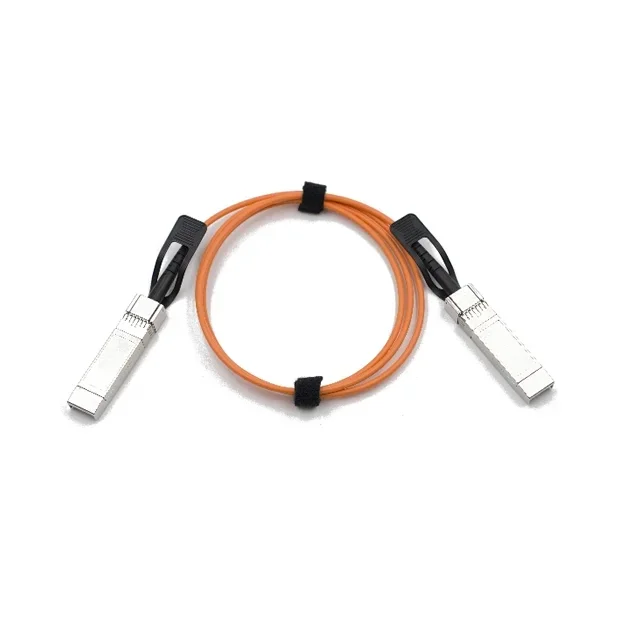An optical module is an optical device that integrates a photoelectric converter, an optical transmitter, and an optical receiver and is widely used in high-speed data transmission scenarios such as communication fields and data centers. According to different application requirements and technical standards, it can be divided into many different classifications. This article will introduce the classification and application fields of optical modules.
1. Classification
Classified according to transmission rate
The transmission rate of an optical module is one of the important indicators to measure its performance. According to different transmission rates, they can be divided into the following categories:
10G optical module: suitable for 10Gbps data transmission, common ones are SFP+, XFP, etc.
25G optical module: suitable for 25Gbps data transmission, common ones are SFP28, QSFP28, etc.
40G optical module: suitable for 40Gbps data transmission, the common ones are QSFP+, CFP, etc.
100G optical module: suitable for 100Gbps data transmission, common ones are QSFP28, CFP2, etc.
400G optical module: suitable for 400Gbps data transmission, the common ones are QSFP-DD, OSFP, etc.
Classification according to the transmission medium
The transmission medium of the optical module is also a way of its classification. According to different transmission media, it can be divided into the following categories:
Single-mode optical module: suitable for single-mode optical fiber transmission, the common ones are SFP, SFP+, XFP, etc.
Multi-mode optical module: suitable for multi-mode optical fiber transmission, the common ones are SFP, SFP+, QSFP+, etc.
Direct-attach optical module: suitable for direct-attach transmission, the common ones are DAC (Direct Attach Cable) and AOC (Active Optical Cable).
Classification according to optical module packaging form
The packaging form of the optical module is also a way of its classification. According to the different packaging forms, it can be divided into the following categories:
SFP series: small package, suitable for low-speed data transmission, such as 1G, 10G, etc.
QSFP series: four-channel package, suitable for high-speed data transmission, such as 40G, 100G, etc.
CFP series: Large package, suitable for ultra-high-speed data transmission, such as 100G, 400G, etc.

2. Application field
As an important part of the optical fiber communication system, the optical module has a wide range of applications. The following are several main application areas of optical modules:
Datacenter
With the rapid development of cloud computing and big data, data centers have increasing demands for high-speed and high-density data transmission. Optical modules play a key role in the data center to achieve high-speed interconnection between servers and fast data transmission. For example, 40G and 100G optical modules are widely used in server interconnection and network switching equipment in data centers.
Communications network
Optical modules are also widely used in communication networks. From long-distance fiber optic communications to metropolitan area networks and local area networks, they all play an important role. For example, 10G and 25G optical modules are often used in transmission equipment of optical fiber communication networks and optical fiber access networks.
Wireless communication
With the rapid development of 5G technology, wireless communications have an increasing demand for high-speed, low-latency data transmission. The application of optical modules in wireless communications is mainly reflected in the photoelectric conversion between optical fibers and microwaves. For example, optical modules can convert optical fiber transmission signals into microwave signals for transmission and reception by wireless base stations.
Automated industry
In the field of industrial automation, optical modules are also widely used. For example, in industrial control systems, high-speed, long-distance data transmission can be realized, and the stability and reliability of the system can be improved.
As an indispensable component of optical fiber communication systems, optical modules have various classifications and application fields. By understanding different types of optical modules and their applications in data centers, communication networks, wireless communications, and industrial automation, we can better select and apply optical modules to meet the high-speed data transmission requirements in different scenarios.
https://www.fineconnco.com/Classification-and-application-fields-of-optical-modules.html


